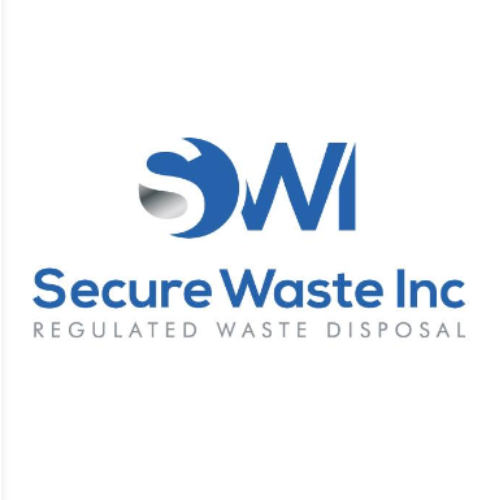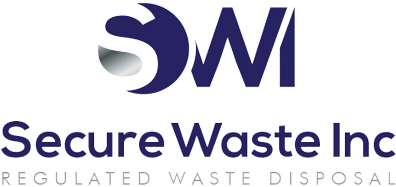Understanding the distinction between Universal and Hazardous Waste is essential in the healthcare sector.
Secure Waste clearly outlines the differences between various types of healthcare waste and provides expert solutions for effectively managing Universal Health Waste.
They delve into the complexities of healthcare waste in detail, emphasizing that healthcare providers must navigate not only universal waste but also medical and hazardous waste during disposal.
This multifaceted waste management can be challenging and costly, often leading to significant adverse environmental impacts if mismanaged. Secure Waste will guide you and your team through the process step-by-step, making it easier to understand and manage these crucial responsibilities.

Healthcare Hazardous Waste: A Significant Environmental Issue
Secure Waste explains although hazardous waste accounts for only a small portion of the total waste produced by hospitals, it significantly impacts waste management budgets, typically representing over 15 percent of total waste-related expenses.
It is crucial for hospitals to accurately assess the quantity of hazardous waste they generate, as regulatory requirements vary depending on this measurement. Understanding the relevant federal and state laws governing the definition and disposal of hazardous waste is essential for compliance and effective cost management.
Hazardous waste commonly arises from various hospital activities. Still, it is not limited to hospitals; even smaller healthcare providers such as Physicians, dentists, and even Surgery centers, especially in departments that frequently use chemicals classified as hazardous, advise Secure Waste. These departments require special handling procedures for waste disposal.
Need Universal Healthcare Waste Management? Review Secure Waste Solutions
Key departments typically involved include:
- Pathology Laboratory
- Histology Laboratory
- Pharmacy
- Morgue
- Engineering and Maintenance
- Emergency Department
By recognizing the sources and implications of hazardous waste, hospitals can improve their management of this critical aspect of waste disposal.
Understanding Universal Waste: What You Need To Know
The Environmental Protection Agency’s (EPA) Universal Waste Program identifies specific categories of hazardous waste that may be subject to less stringent disposal requirements due to their widespread presence and manageable risk.
This includes everyday items such as batteries, pesticides, mercury-containing devices, lamps, and light bulbs, which could be recycled rather than discarded. However, it’s important to remember that these universal waste regulations can vary significantly depending on state and local laws, which might impose stricter guidelines.
Globally, the World Bank Group reports that humanity generates an astonishing 2.01 billion tons of waste annually, with a staggering 33 percent of this waste not being managed in a way that protects the environment. Notably, high-income nations like the United States are responsible for approximately 34 percent of the world’s total waste production, underscoring the urgent need for effective waste management strategies.
As awareness of environmental issues continues to grow, the significance of effective waste management in fostering sustainability has become more pronounced. Universal waste, while offering opportunities for recycling and recovery, also presents distinct challenges. These everyday materials often contain hazardous components that could pose grave risks to human health and the environment if not handled carefully.
With many states adopting stricter waste disposal regulations, a thorough understanding of universal waste management is paramount. This knowledge is crucial for legal compliance, safeguarding public health, and protecting our planet.
This detailed guide will delve into the classification of universal waste, examine pertinent regulations, and highlight best practices for effective management, empowering individuals and organizations to contribute positively to sustainability efforts.
Definition of Universal Waste
Universal waste is a hazardous waste category encompassing items commonly produced by households and businesses. This includes batteries, pesticides, mercury-containing equipment (such as thermostats), and specific types of lamps, including fluorescent bulbs. While these items contain hazardous materials, they are prevalent in everyday life. They are regulated under less stringent rules to facilitate proper disposal and recycling than other dangerous wastes.
Universal waste management focuses on the safe collection, transportation, and recycling or disposal of these materials, aiming to prevent environmental harm.
Key Differences Between Universal Waste and Hazardous Waste
Regulation and Management Requirements Universal Waste: Universal waste management is regulated under a more lenient framework known as the Universal Waste Rule (UWR). It simplifies the processes of storage, transportation, and recycling and encourages safe disposal practices. This regulatory approach reduces the burden on those generating universal waste.
Hazardous Waste: Stricter regulations under the Resource Conservation and Recovery Act (RCRA) govern dangerous waste management, which involves comprehensive tracking, labeling, and reporting to mitigate environmental and health risks. The regulations require more complex permitting and impose stricter time limits on waste accumulation.
Types of Waste Universal Waste: This category comprises commonly generated items containing hazardous substances and frequently found in consumer and commercial settings.
-Hazardous Waste: This includes ignitable, corrosive, reactive, or toxic materials. Examples include industrial solvents, medical waste, and certain chemicals that do not fall under the universal waste classification.
Volume and Generation Universal Waste: Typically generated in significant quantities by households, businesses, and institutions, universal waste is considered less dangerous when handled and recycled correctly. Hazardous waste is generally produced in specialized industrial processes and poses greater environmental and human health risks.
Storage and Accumulation Time: Generators can store it for extended periods (up to one year) without a hazardous waste permit, facilitating easier collection and recycling. Hazardous Waste is Subject to stricter storage time limits, with large quantity generators (LQGs) typically allowed up to 90 days and small quantity generators (SQGs) permitted 180 to 270 days. All require extensive permitting for more extended storage.
Understanding the distinctions between universal and hazardous waste can help individuals and organizations better manage their waste and minimize environmental impact.

Expert Medical Waste Management: With over 25 years of industry experience, Secure Waste is a trusted local leader in hazardous and biohazardous waste disposal across Maryland, Virginia, and Washington, D.C. Specializing in medical waste management, sharps needle disposal, and biohazard waste removal, the company ensures full compliance with federal, state, and local regulations while prioritizing environmental sustainability.
The company also offers additional services, including secure document shredding and sharps container sales, providing comprehensive solutions for healthcare facilities and businesses. Our cost-effective services help clients maintain regulatory compliance without unexpected costs.
With a commitment to customer satisfaction, Secure Waste offers tailored waste management plans that align with industry best practices. Their team of experts provides reliable, timely, and compliant services, making them the preferred choice for medical waste disposal. For a free waste quote or more information, visit www.securewaste.net






